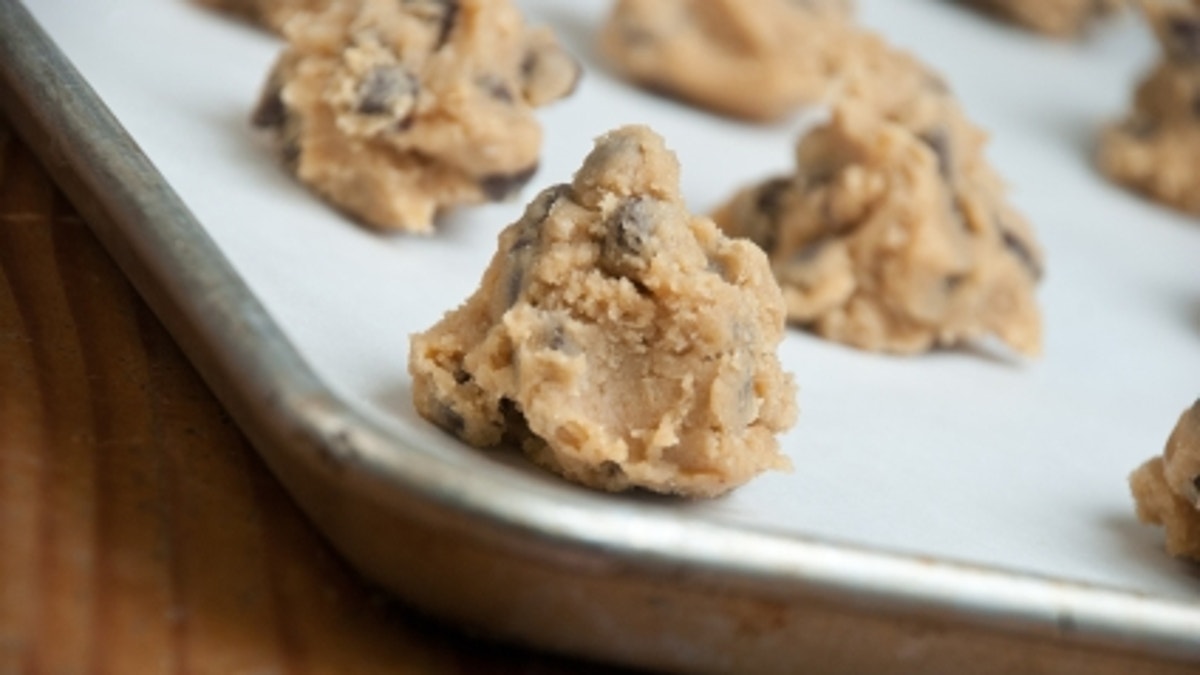
A pan of freshly prepared homemade chocolate chip cookie dough sits on the counter waiting to go into the oven.
With all the hand sanitizer America bought this year ($190 million worth, to be exact), you'd think that our germphobia might have made us safer cooks.
But as a Health.com poll of some 400 readers and 100 professional chefs reveals, our counter intelligence is still somewhat...medieval. With parties, potlucks, and outings galore, the holidays are ripe for food faux pas.
Here's how to make sure the only thing you spread—and get!—is good cheer.
73 percent of you lick the spoon while cooking
Yucky? Yep. Illness-inducing? Could be. "If it's batter that will get baked or something on the stove that's simmering, like sauce, that's hot enough to kill mouth bacteria," says O. Peter Snyder, a food-safety expert at the Hospitality Institute of Technology and Management in St. Paul, Minn. But if it's salad fixings or frosting on a cake you're preparing, you could introduce strep or the flu into the bowl and infect people.
Even if you don't feel sick, trouble could be brewing, especially during wintertime when germs run rampant, says Philip Tierno, director of clinical microbiology and immunology at NYU Langone Medical Center in New York City. To avoid making Germ Chocolate Cake (or horrifying your guests), keep a bowl and a teaspoon by the pot or dish and ladle in food to taste.
______________________________________________
More From Health.com:
Keep Your Kitchen Germ-Free
Most Sickening Food Ingredients
11 Things It's Best to Buy Organic
_______________________________________________
76 percent of you double-dip
It's a party foul, all right: Researchers at Clemson University in South Carolina found that dips gained 100,000 bacteria after testers dug in. "Double-dipping is the bacterial equivalent of French kissing everyone in the room," says study author and food scientist Paul Dawson.
Even if guests don't double-dip, fingers in bowls still germ up food. One study found that about 10 percent of a random sampling of people had E. coli on their mitts—an indication of fecal contamination (yikes!). Per records from the CDC, salsa, guacamole, and Mexican dip account for 4 percent of outbreaks of restaurant food poisoning. In 20 percent of those cases, food workers' fingers contaminated the dip.
Bottom line: It's best to steer clear of ye olde communal dip, Tierno says. If you're hosting, serve dip with a spoon, or pull a Martha and portion into individual mini cups and stand sliced veggies or pretzel sticks inside.
54 percent of you serve food dropped on the floor
Yet more risky kitchen business. In another study from Dawson, fallen food picked up salmonella from the floor almost immediately (so much for that five-second rule). And while more bacteria stuck to moist foods like fruit and meat than dry ones like nuts, no food escaped unscathed.
"I wouldn't eat anything off my kitchen floor," Dawson says. "Even if you have many times without a problem, one day it will probably catch up to you." Safe options for resuscitating fallen food:
* Slice off the part that touched the floor
* Reheat food to 165° F
* Turn crudité into a stir-fry or sliced fruit into a warm compote.
52 percent of you dish out food past the expiration date
Spoiler alert: There's no harm done. In fact, the other 48 percent of poll-takers are probably wasting perfectly good food. "Dates on food have more to do with quality than safety," says Joan Salge Blake, RD, a spokesperson with the Academy of Nutrition and Dietetics.
Per the United States Department of Agriculture, dried goods such as crackers or chips that are past their "use-by" date aren't usually a problem. Ditto for milk, cheese, or yogurt that are dated by a few days and don't smell foul or have mold (the blue-green stuff can cause gastric distress). Eggs are typically fine for as long as three to five weeks past the day you bought them. However, avoid fresh meat, chicken, turkey, or fish that's more than a few days past its use-by date—or you risk food poisoning.
31 percent of you don't toss food with bugs
With many of us buying organic these days, it's more likely that you'll spot an aphid or earthworm on your produce. Screech if you must, then remove it and keep eating—it's harmless, says Sarah Klein, a food safety expert with the Center for Science in the Public Interest. Ditto for a random ant or spider on food.
One exception: If you see a cockroach in a food, it hitched a ride from the kitchen, not the farm. Since these creepy crawlies can transmit organisms like salmonella that cause food-borne illness, dump the dish.
